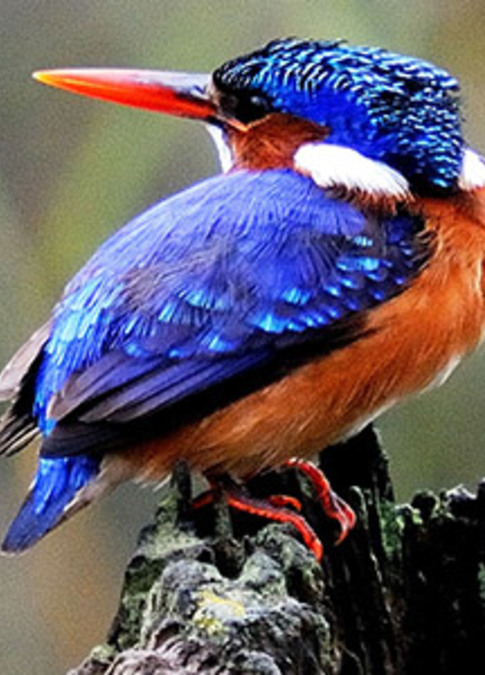Butterfly in the Grass
It was finding a large sheet of cork that led to my collecting insects. I brought it home from where I had found it amongst the rubbish behind the shops. It was obviously something out of the ordinary, and a treasure to a small boy, but I wasn't too sure what to do with it.
“Why don't you start collecting butterflies?” suggested my mother, and she explained how lepidopterists mounted their specimens of moths and butterflies using pins to attach their finds to sheets of cork. (This was, of course, in the days before plastics.) This seemed a good suggestion and I at once set off to catch some butterflies, an undertaking that I soon discovered was less easy than I had at first imagined. Far easier to catch were grasshoppers and beetles and so it was that it became a general insect collection.
A problem arose regarding the killing of the insects. My mother objected to my sticking pins into living beetles, and my father took exception to my imprisoning them in an old cigarette tin until such time as they were dead. Having read up on the subject I pointed out that what was required was a proper killing-bottle, but my mother refused to allow me to have anything to do with potentially dangerous chemicals. Eventually I discovered an old paint tin in the garage that seemed, with some cotton wool placed on the jelly-like substance at the bottom, to act as the next best thing to a killing-bottle. Putting them into the tin in the garage also meant that no one else in the family was aware of what was happening, and no objections were raised.
It must have been a good year – or a bad one, depending on one's point of view – for locusts, for there were soon dozens or more pinned to the cork. That they were all of the same species bothered my mother, a keen gardener, not one jot, but my father explained that the idea of collecting was to try and assemble as many different species or variations as possible. The collection now progressed rather more slowly than before, and spent a lot of time languishing at the bottom of my wardrobe.
Returning from boarding-school at the end of one term, I looked for my collection in the usual place, but it was nowhere to be seen.
“I think that the mice must have got at it,” said my mother. I harboured some suspicions as to its actual fate, but soon after began instead to collect stamps.
Nowadays there isn't room in the house for an insect collection and so if we come across anything of interest we photograph it. Caryl was the one that found in the grass a butterfly that neither of us remembered seeing before. Nor could we find it in any of our reference books, so we sent off a photo of it to farmer and lepidopterist Ernest Pringle of Huntly Glen in the Baviaans River valley. His own huge collection is housed in custom-made cupboards, and apart from its scientific value is spectacularly beautiful. His reply was prompt. What Caryl had seen was an Eyed Pansy, Junonia orithyia madagascariensis, a widespread species found in the tropical and subtropical zones of Africa, and in South Africa normally associated with areas north of the Vaal River, or in kwaZulu/Natal. Caryl's specimen was the southernmost record of the species, although they had been seen in the Bathurst-Kariega area, and one had been photographed in a Port Elizabeth garden in April of this year. What we wondered was the Eyed Pansy doing on the southern coast of the Eastern Cape?
It turned out that this was precisely what Pringle has been trying to discover. Up until 2003 there were no records of the butterfly ever having been seen south of Pondoland, yet in 2009 hundreds were seen near Bathurst and they were plentiful on Pringle's farm, Huntly Glen, situated in the mountains above Bedford. He noted how both the farm and the Bathurst area have been thoroughly searched for decades without a single example being seen until five years ago. Is it possible that their southern movement is in some way linked to global warming? Perhaps the Eyed Pansy is telling us that its natural home, the subtropical savannah is moving southwards. This is not necessarily good news. Perhaps other insect species, such as the malaria-carrying anopheles mosquito is also on the move. Also the spread of the savannah would mean a threat to the species-rich Cape fynbos whose eastern edge reaches Port Elizabeth. And these are only two possible consequences.
So the most significant sighting of your visit to Kariega Park may not be a pride of lions, or a family of elephants, but a butterfly with wings like the flowers of a pansy.








